Discover 11 hidden attractions, cool sights, and unusual things to do in Greenville (United States). Don't miss out on these must-see attractions: Jones–Lee House, Pitt County Courthouse, and James L. Fleming House. Also, be sure to include Robert Lee Humber House in your itinerary.
Below, you can find the list of the most amazing places you should visit in Greenville (North Carolina).
Table of Contents
Jones–Lee House

Jones–Lee House is a historic home located at Greenville, Pitt County, North Carolina. It was built in 1895, and is a two-story, "L"-plan, frame dwelling with Queen Anne style decorative elements. It has an intersecting gable roof and one-story, gable roofed porch. It features decorative shingles, curvilinear sawnwork, and applied half-timbering.
It was added to the National Register of Historic Places in 1980.[1]
Pitt County Courthouse

Courthouse. Pitt County Courthouse is a historic courthouse building located at Greenville, Pitt County, North Carolina. It was designed and built in 1910 by the architectural firm of Milburn, Heister & Company, and is a three-story, rectangular, Classical Revival style tan brick building. The front facade features a tetrastyle Ionic order portico, a hipped roof, and dominating three-stage cupola.
It was added to the National Register of Historic Places in 1979. It is located in the Greenville Commercial Historic District.[2]
James L. Fleming House
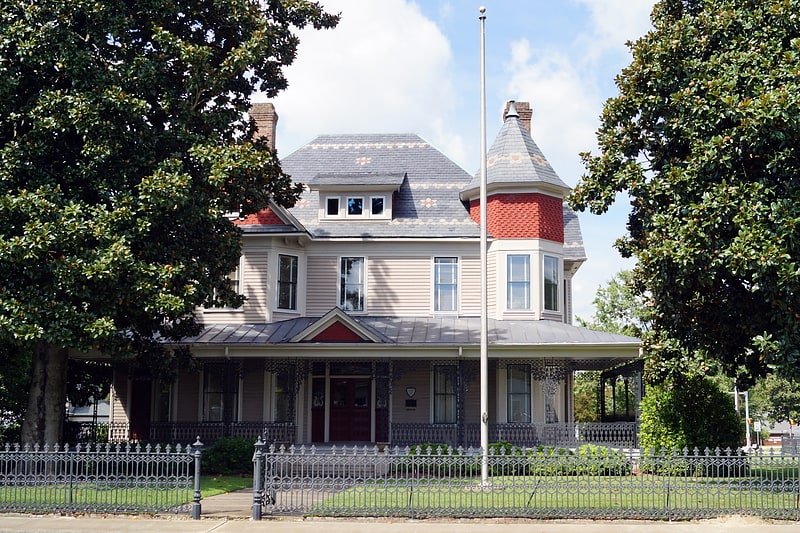
The James L. Fleming House, also known as the Fleming-Winstead House, is a historic home located at 302 S. Greene St. in Greenville, Pitt County, North Carolina. It was built in 1901–1902, and is a 2+1⁄2-story, frame Queen Anne style dwelling, with design credited to Barber & Klutz who published architectural pattern books. It has a central hall, double pile plan and a one-story rear ell and two-story rear addition. It features a three-stage polygonal tower, slate covered hipped roof, and two-story polygonal bays.
It was listed on the National Register of Historic Places in 1983.
James Leonidas Fleming (1867-1909), who established East Carolina University in Greenville, built the home for his wife, Lula White, and his family. Fleming was elected to the state senate and began efforts to establish the East Carolina Teacher's Training School, and getting it situated in Greenville. He was later killed in an automobile accident along the Greenville and Raleigh Plank Road in 1909.[3]
Robert Lee Humber House
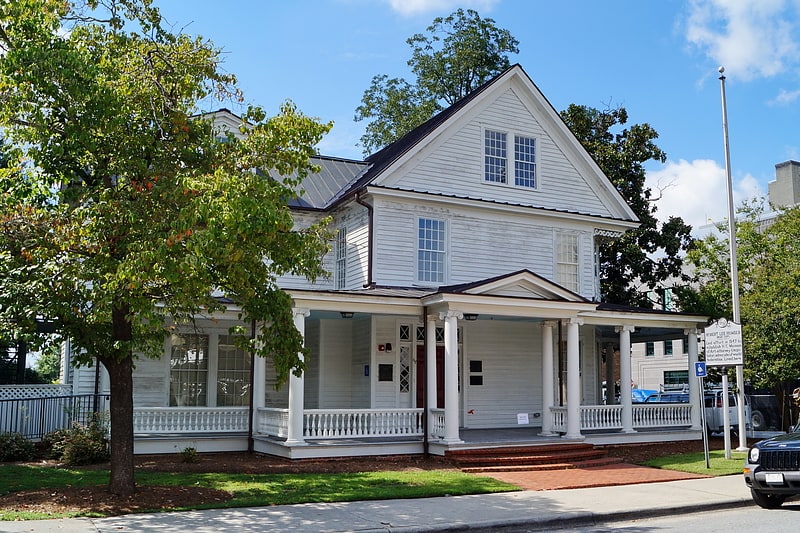
Robert Lee Humber House is a historic home located at Greenville, Pitt County, North Carolina. It was built in 1895, and is a 2+1⁄2-story, "T"-plan, frame dwelling with Queen Anne and Colonial Revival style design elements. It has a one-story rear kitchen ell and a wraparound porch with Ionic order columns.
It was added to the National Register of Historic Places in 1981.[4]
Greenville Tobacco Warehouse Historic District
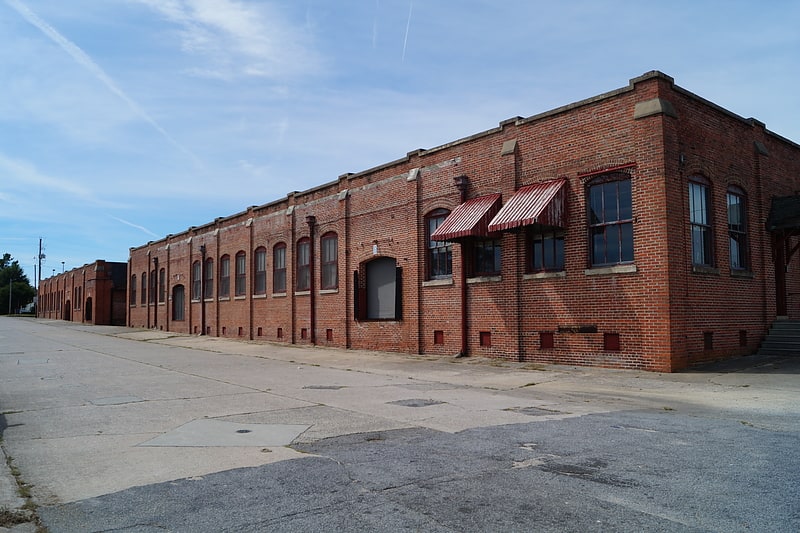
Greenville Tobacco Warehouse Historic District is a national historic district located at Greenville, Pitt County, North Carolina. The district encompasses seven contributing buildings and one contributing structures in an industrial section of Greenville. It includes buildings dated from about 1905 to 1947 and notable examples of Art Deco and Italianate style industrial architecture. Contributing resources are the American Tobacco Company Storage Warehouse #2.; the Prichard-Hughes Warehouse; the Dail-Ficklen Warehouse; the Export Leaf Factory; the E. B. Ficklen Factory; the Gorman Warehouse; the Star Warehouse; and the System of CSX Railroad Tracks.
It was listed on the National Register of Historic Places in 1997, with a boundary increase in 1999.[5]
E. B. Ficklen House

Historical place in Greenville, North Carolina. E. B. Ficklen House, also known as Buckingham, is a historic home located at Greenville, Pitt County, North Carolina. It was built in 1902, and is a two-story, Queen Anne style frame dwelling with an exaggerated hip roof. It features a circular corner tower capped by a conical roof, projecting gable, and complicated porch configuration including a first floor wraparound porch with three Ionic order columns.
It was added to the National Register of Historic Places in 1984. It is located in the Skinnerville-Greenville Heights Historic District.[6]
United States Post Office
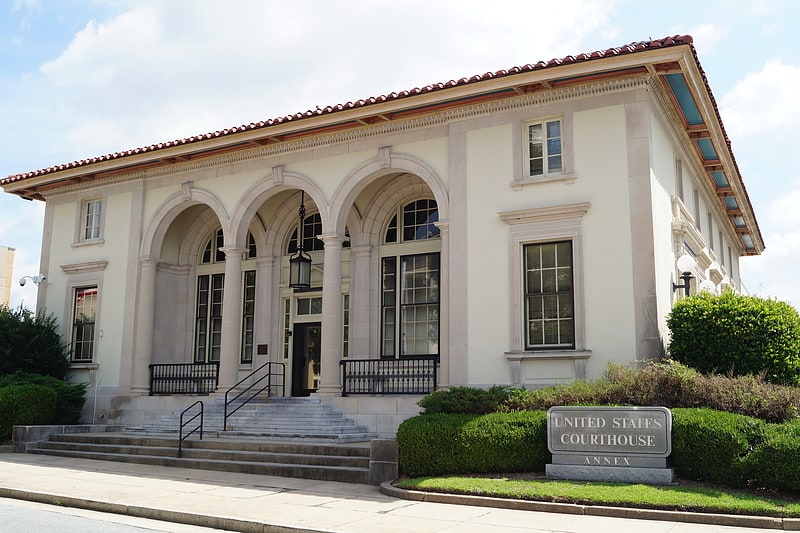
Post office in Greenville, North Carolina. The United States Post Office, also known as the Federal Building, is a historic post office building located at Greenville, Pitt County, North Carolina. It was designed by the Office of the Supervising Architect under the direction of Oscar Wenderoth and built in 1913–1914. It is a two-story, five bay, Florintine Renaissance style stuccoed brick building on a limestone base. It has a low hip roof of terra cotta tile with overhanging eaves. The front facade features a three-bay loggia formed by arches with voluted keystones, springing from Tuscan order columns. This building served as the main post office for Greenville until 1969. It currently serves as a U.S. Courthouse.
It was added to the National Register of Historic Places in 1986. It is located in the Greenville Commercial Historic District.[7]
Jesse R. Moye House
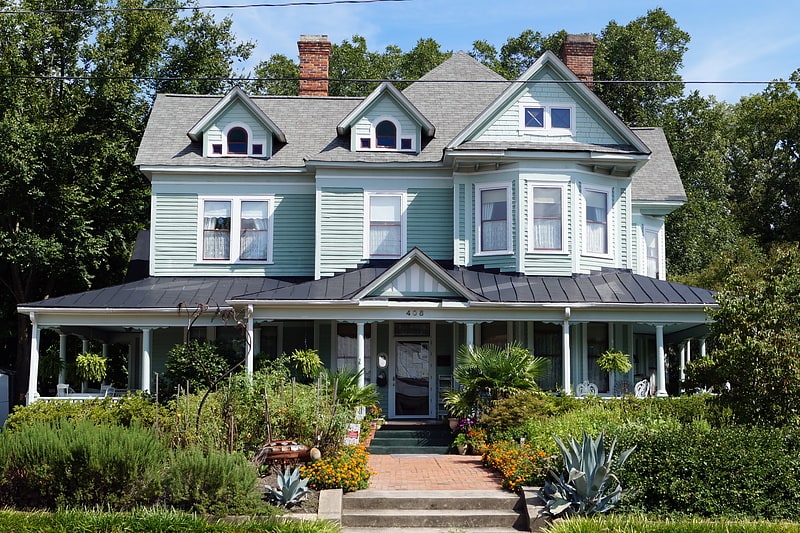
Historical place in Greenville, North Carolina. Jesse R. Moye House is a historic home located at Greenville, Pitt County, North Carolina. It was designed by architect Herbert Woodley Simpson and built in 1902. It is a 2+1⁄2-story, Queen Anne style frame dwelling with Colonial Revival style details. It has a large wraparound front porch, multiple projections, and multiple gable roofline.
It was added to the National Register of Historic Places in 1997.[8]
The Jones Law Firm

Address: 117 W 4th St, Greenville
Greenville Commercial Historic District
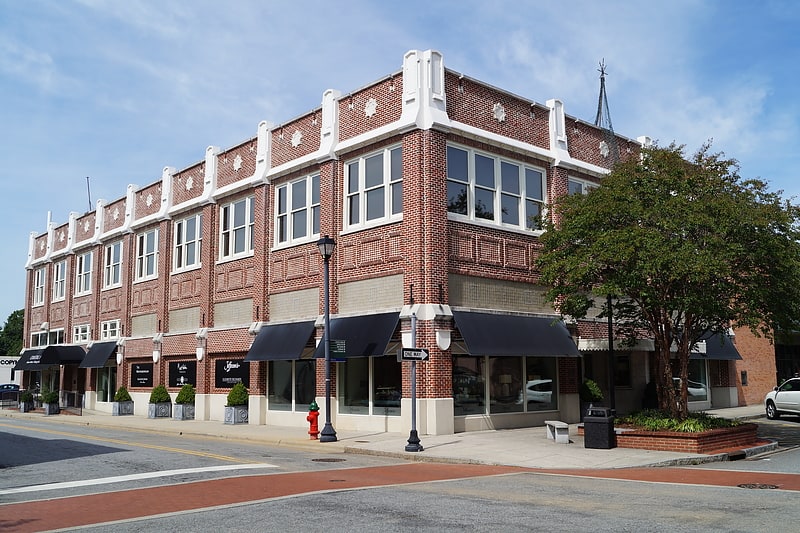
Greenville Commercial Historic District is a national historic district located at Greenville, Pitt County, North Carolina. The district encompasses 51 contributing buildings in the central business district of Greenville. It includes buildings dated from about 1914 to 1952 and notable examples of Greek Revival and Queen Anne style architecture. Located in the district and listed separately are the Pitt County Courthouse by Milburn, Heister & Company and U.S. Post Office. Other notable buildings include the Proctor Hotel, Montgomery Ward Department Store, Dail-Hodges Building, Blount Building, Greenville Bank and Trust, Smith Electric Building, Greenville Municipal Building designed by Benton & Benton, Blount-Harvey Department Store, White's Theater, Charles Greene House, and the Robert Lee Humber House.
It was listed on the National Register of Historic Places in 2003, with a boundary increase in 2009.[9]
William H. Long House
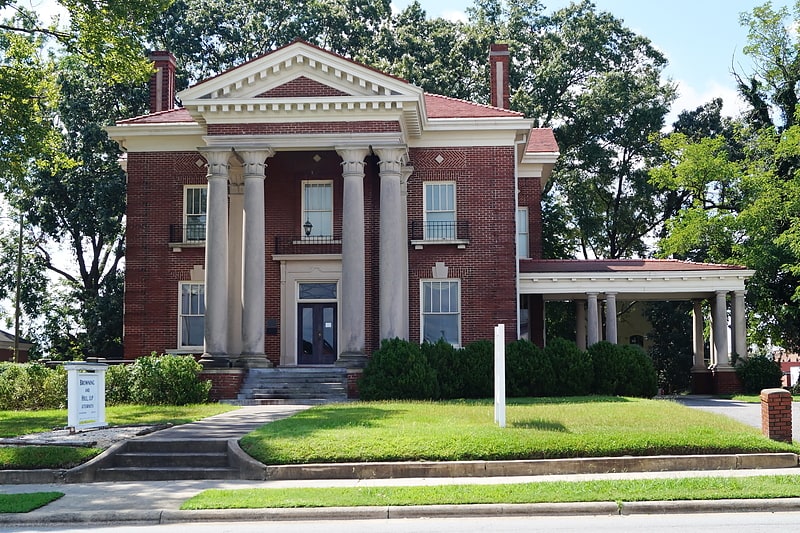
Historical place in Greenville, North Carolina. William H. Long House is a historic home located at Greenville, Pitt County, North Carolina. It was built in 1917–1918, and is a two-story, brick veneer dwelling with Classical Revival style design elements. It a hipped roof intersected by gable roofed wings on the back and sides. It features a monumental pedimented portico and porte cochere supported by paired Tuscan order columns. It was built by William Henry Long, who served as mayor of Greenville from 1901 to 1903. It was renovated about 1980 to house law offices.
It was added to the National Register of Historic Places in 1982.[10]